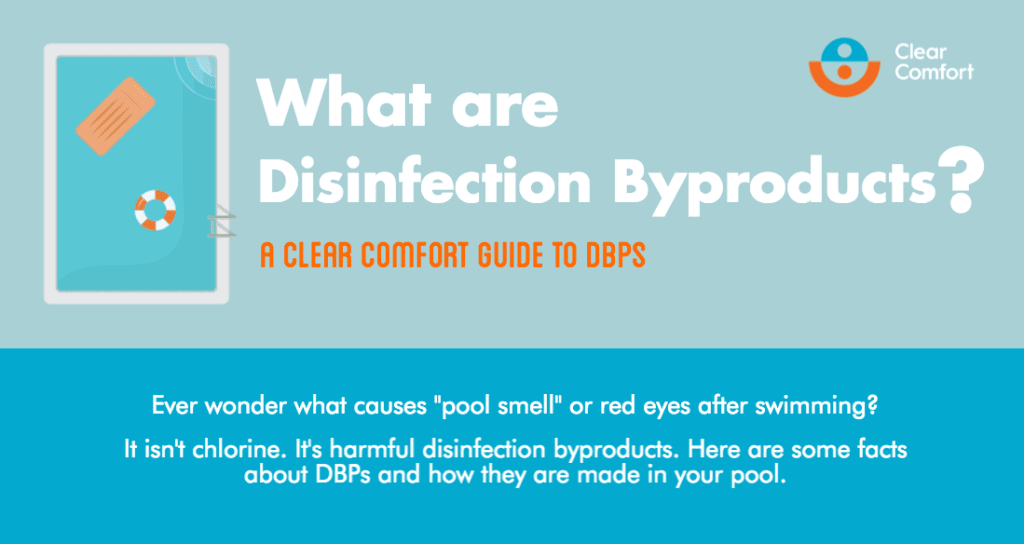What are disinfection byproducts?
In pools, harmful disinfection byproducts, or DBPs, are made when chlorine interacts with organic material. Haloacetic acid (HAA), trihalomethane (THM) and chlorite are common DBPs.
What is organic material and how does it enter my pool?
When organic material from swimmers or the swimming environment react with the pool’s chlorine or bromine, DBPs are created. Organic material can come from vegetation around the pool, sweat, hair products, lotions, urea, skin oils, etc.
The reason lifeguards ask swimmers to rinse off before getting into a pool is to reduce the organic material that’s introduced to the pool. In many European countries, pre-swimming showering practices are closely monitored and are considered a routine part of swimming.
How does chlorine cause DBPs?
Chlorine alone doesn’t cause DBPs. DBPs are the result, or byproduct, of chlorine reacting with organic material from swimmers and the environment.
Are DBPs harmful?
Yes, DBPs are harmful for our bodies to ingest, inhale and generally be exposed to. DBPs have been linked to causing lifeguard lung, asthma and other respiratory issues. Additionally, DBPs are what causes red eyes, irritated skin, “pool smell” and coughing when swimming.
Who’s at high health risks from DBPs?
People who are sensitive to chlorine or who are frequently exposed to chlorinated pool water are more likely to develop the respiratory or digestive health issues associated with DBPs. Avid swimmers, lifeguards, coaches, pool staff and babies are at high risk for the harmful side effects of DBPs.
In my experience competing and coaching swimming, I’ve known many swimmers and coaches who suffer from DBP related health issues, myself included. Many swimmers I’ve coached, and when I was competing myself, have developed asthma while training in a chlorinated indoor pool.
Can I prevent or destroy DBPs in my pool?
Yes, advanced oxidation process can reduce and prevent DBPs. In a third-party study with a YMCA pool, Clear Comfort’s hydroxyl-based advanced oxidation pool technology eliminated the disinfection byproduct HAA by 91.5 percent and THM by 84.8 percent, making it a healthier, more enjoyable environment for swimmers. Read the full case study here.




